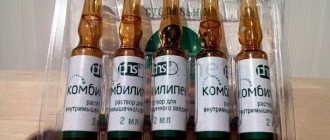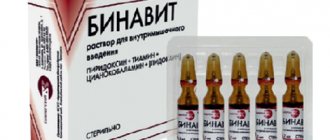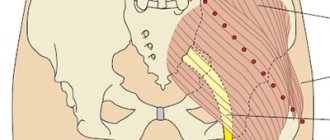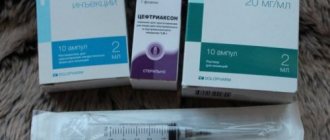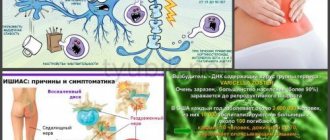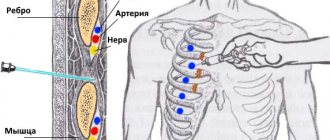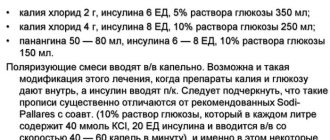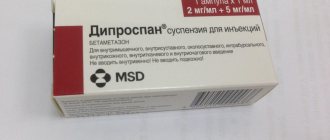Home | About us | Delivery | Advertisers | Login | Registration
- Medicines
- dietary supplementsVitamins
- Categories from A to Z
- Brands from A to Z
- Products from A to Z
- Medical equipment
- beauty
- Child
- Care
- Honey products appointments
- Herbs and herbal teas
- Medical nutrition
- Journey
- Making medicinesStock
Pharmacy online is the best pharmacy in Almaty, delivering medicines to Almaty. An online pharmacy or online pharmacy provides the following types of services: delivery of medicines, medicines to your home. Online pharmacy Almaty or online pharmacy Almaty delivers medicines to your home, as well as home delivery of medicines in Almaty.
my basket
Apteka84.kz is an online pharmacy that offers its customers medicines, medicinal and decorative cosmetics, dietary supplements, vitamins, baby food, intimate products for adults, medical equipment and thousands of other medical and cosmetic products at low prices. All data presented on the Apteka84.kz website is for informational purposes only and is not a substitute for professional medical care. Apteka84.kz strongly recommends that you carefully read the instructions for use contained in each package of medicines and other products. If you currently have any symptoms of the disease, you should seek help from a doctor. You should always tell your doctor or pharmacist about all the medicines you take. If you feel you need further help, please consult your local pharmacist or contact our GP online or by telephone.
© 2021 Pharmacy 84.
Lidocaine Bufus, 100 mg/ml, solution for injection, 2 ml, 10 pcs.
The toxicity of lidocaine increases when it is used simultaneously with cimetidine and propranolol due to an increase in the concentration of lidocaine; this requires a reduction in the dose of lidocaine. Both drugs reduce hepatic blood flow. In addition, cimetidine inhibits microsomal activity. Ranitidine slightly reduces the clearance of lidocaine, which leads to an increase in its concentration in the blood. Antiviral agents (eg, amprenavir, atazanavir, darunavir, lopinavir) can also cause an increase in lidocaine serum concentrations.
Hypokalemia caused by diuretics may reduce the effect of lidocaine when used concomitantly.
Lidocaine should be used with caution in patients receiving local anesthetics or agents structurally similar to amide-type local anesthetics (eg, antiarrhythmics such as mexiletine, tocainide) since systemic toxic effects are additive.
Separate drug interaction studies have not been conducted between lidocaine and class III antiarrhythmics (eg, amiodarone), but caution is advised.
In patients concomitantly receiving antipsychotics that prolong or have the potential to prolong the QT interval (e.g., pimozide, sertindole, olanzapine, quetiapine, zotepine), prenylamine, epinephrine (with occasional intravenous administration), or 5-HT3-serotonin receptor antagonists (e.g., tropisetron, dolasetron), the risk of developing ventricular arrhythmias may increase.
Concomitant use of quinupristin/dalfopristin may increase lidocaine concentrations and thus increase the risk of developing ventricular arrhythmias; their simultaneous use should be avoided.
Patients receiving concomitant muscle relaxants (eg, suxamethonium) may have an increased risk of enhanced and prolonged neuromuscular blockade.
Cardiovascular insufficiency has been reported following the use of bupivacaine in patients receiving verapamil and timolol; lidocaine is similar in structure to bupivacaine.
Dopamine and 5-hydroxytryptamine lower the seizure threshold in patients receiving lidocaine.
Opioids appear to have a convulsant effect, as supported by evidence that lidocaine lowers the seizure threshold to fentanyl in humans.
Combinations of opioids and antiemetics, sometimes used for sedation in children, may lower the seizure threshold to lidocaine and increase its central nervous system depressant effects.
Use of epinephrine with lidocaine may reduce systemic absorption, but inadvertent intravenous administration increases the risk of ventricular tachycardia and ventricular fibrillation.
The simultaneous use of other antiarrhythmics, beta-blockers and blockers of “slow” calcium channels can further reduce AV conduction, ventricular conduction and contractility.
The simultaneous use of vasoconstrictors increases the duration of action of lidocaine.
Concomitant use of lidocaine and ergot alkaloids (eg, ergotamine) can cause severe hypotension.
Caution must be exercised when using sedatives as they may interfere with the action of lidocaine on the central nervous system.
Caution should be exercised with long-term use of antiepileptic drugs (phenytoin), barbiturates and other inhibitors of liver microsomal enzymes, as this may lead to decreased effectiveness and, as a result, an increased need for lidocaine. On the other hand, intravenous administration of phenytoin may enhance the depressant effect of lidocaine on the heart.
Ethyl alcohol, especially with prolonged abuse, can reduce the effect of the drug.
Lidocaine is not compatible with amphotericin B, methohexitone, nitroglycerin.
With the simultaneous use of lidocaine with narcotic analgesics, an additive effect develops, which is used during epidural anesthesia, but increases the depression of the central nervous system and respiration.
Vasoconstrictors (epinephrine, methoxamine, phenylephrine) can cause increased blood pressure and tachycardia.
Use with monoamine oxidase inhibitors (furazolidone, procarbazine, seleginine) increases the risk of lowering blood pressure.
Guanadrel, guanethidine, mecamylamine, trimethaphan camsylate increase the risk of a pronounced decrease in blood pressure and bradycardia.
Anticoagulants (including ardeparin sodium, dalteparin sodium, danaparoid sodium, enoxaparin sodium, heparin, warfarin and others) increase the risk of bleeding.
Lidocaine reduces the cardiotonic effect of digitoxin.
Lidocaine reduces the effect of antimyasthenic drugs, enhances and prolongs the effect of muscle relaxants.
When treating the injection site with disinfectant solutions containing heavy metals, the risk of developing a local reaction in the form of pain and swelling increases.
Mixing lidocaine with other medications is not recommended.
Indications of the drug
The drug can be used only as prescribed by a doctor. Self-use may adversely affect your health. Lidocaine is widely used in medicine. It is used to administer various methods of anesthesia.
- Infiltration. It is commonly used to “freeze” certain tissues. This approach is mainly used in dentistry.
- Terminal. Pain receptors are temporarily blocked. The effect is short-lived.
- Conductor. Used during operations. Nerve impulses are blocked in a certain area.
- Spinal. It is used if it is necessary to reduce the pain threshold in the spinal center. To do this, an injection is made into the subarachnoid space. In this case, the roots of the spinal center are blocked.
- Epidural. In this case, it is necessary to give an injection into the epidural space.
The drug is indicated for the following types of pathologies:
- when the patient begins to develop ventricular arrhythmia, the causative agent of which is considered to be glycoside intoxication;
- for patients who suffer from coronary syndrome for preventive purposes;
Popular Anesthetic intramuscular injection with Voltaren
It is widely used in dentistry:
- for removing baby teeth in preschool children;
- when it is necessary to remove bones or apply sutures to wounds in the oral cavity;
- if there is a need to perform an autopsy during sudden abscesses;
- when installing a prosthesis or crown on the gum, to relieve pain in the gum itself;
- to destroy the papilla on the tongue;
- if there is a need to open a cyst in the salivary glands;
- in children, when a frenulectomy is needed.
Doctors treating ENT diseases use lidocaine injections in the following cases:
- when it is necessary to perform surgery to remove nasal polyps;
- for the treatment of deviated nasal septum;
- during electrocoagulation;
- before performing an operation to open a peritonsillar abscess;
- to administer anesthesia before performing a puncture of the maxillary sinuses;
- analgesic effect before rinsing the nasopharynx;
- before removing the tonsils (tonsillectomy);
- before removing the adenoids (adenoidectomy).
Not only before surgery, injections of the drug are used. He is appointed:
- when you need to numb the nasopharynx or mouth before inserting a probe;
- before examining the rectum with a probe;
- if there is a need to replace catheters.
This is only a small part of the procedures where the drug is used. Gynecology, ophthalmology, obstetrics, plastic surgery - its functions as an anesthetic are currently used in all areas of medicine.
Contraindications
The anesthetic has contraindications:
- in the presence of atrioventricular block (in this case, the conduction of the drug is impaired);
- diseases associated with the work of the heart (heart failure, decreased heart rate, low blood pressure);
- porphyria, or as it is also called “scientific vampirism”;
- the presence of neuromuscular malaise (myasthenia gravis) (striated and transverse muscles get tired very quickly);
- problems with the liver and kidneys, which impairs the excretion of lidocaine hydrochloride;
- allergic reactions to any of the components of the drug;
Allergies can cause anaphylactic shock. This is very dangerous as it can be fatal.
- breastfeeding and any trimester of pregnancy;
- low blood volume circulation rates.
Not only Lidocaine - drugs of similar action are strictly contraindicated for the patient.
What is Lidocaine used for?
The drug is administered both intramuscularly and intravenously. But it can also be used as a dropper. This achieves maximum effect after 10 – 20 minutes.
The active substance of the drug, after the injection, begins to affect the membranes of neurons. This allows the movement of sodium ions to be blocked by the membrane. In this case, all exciting processes are inhibited. But complications may arise with calcium ions.

If an alkaline or slightly alkaline environment occurs, all components of the drug may dissolve. Lidocaine has two functions. It dilates blood vessels and reduces the pain threshold. Provided that the solution is administered via injection, it is quickly absorbed and the anesthetic begins to act immediately.
The active substance (Lidocaine hydrochloride) accumulates in the liver after the effect of the medicine ends. Then it is excreted naturally along with urine or bile. This process takes about 10 hours.
How to inject lidocaine
The instructions for Lidocaine injections state that Lidocaine is used as an anesthetic before any surgery. The dosage of the drug depends on the type of procedure. It is prescribed exclusively by a doctor with a medical education.
Shallow anesthesia. This procedure is done if it is necessary to treat the nasopharynx, oral cavity, gastrointestinal tract or rectum. Usually a solution (2%) is taken. The volume of the drug is calculated according to the following scheme (2 mg per 1 kg of weight). The effect of the injection lasts from 15 to 30 minutes. The maximum dose should not exceed 20 ml. solution.
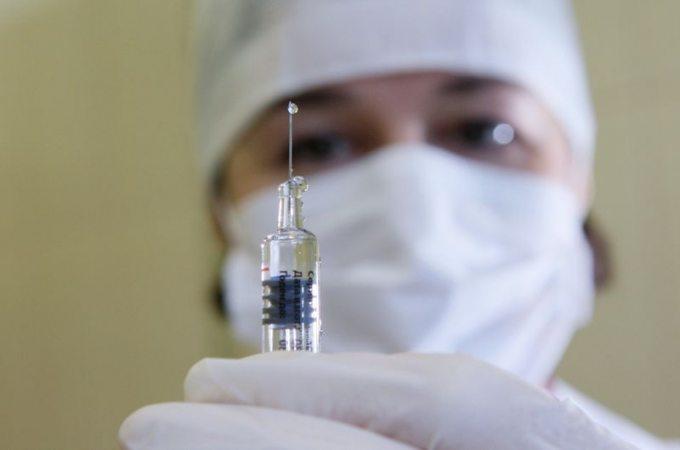
Different types of anesthesia require different dosages:
- for conduction anesthesia, take a 2% solution of Lidocaine in a volume of 5 - 10 ml, but in order to immobilize the fingers of the limbs, it is better to use 2 - 3 ml. solution;
- to perform epidural anesthesia, take 10–20 mg. drug;
- For spinal anesthesia, 3–4 ml is enough. anesthetic.
To prolong the effect of the drug, you need to add 0.1% adrenaline.
Intravenous route of drug administration. It is used very rarely. Typically, the solution is administered intravenously only when antiarrhythmic therapy is needed. First you need to dilute 25 ml. drug in 100 ml. saline solution to obtain an anesthetic concentration of 20 mg/ml. Only in this form can it be administered intravenously.
Popular Hot calcium chloride injections: are they really that painful?
The drug must be administered according to a specific schedule. The initial dose is 1 mg/kg. The drug must be administered at a certain speed. Typically this figure ranges from 25 to 50 mg/min. For example, if a patient weighs 95 kg, his dose of lidocaine should be 95 mg (or 0.095 g). And it will have to be administered in 1.9 minutes. (116 sec.).
But here we must take into account the maximum dosage. No more than 300 mg of the drug can be administered in 1 hour, and this figure should not exceed 2000 mg per day. If a patient is administered an anesthetic of 2–10%, it is necessary to simultaneously monitor his electrocardiogram. It is also strictly forbidden to apply disinfectants at the injection site.
Storage
The storage temperature of the drug is from 8 to 25 ° C. In this case, all ampoules must be in the packaging. If any capsule is opened or the seal is broken, the solution is not suitable for injection. Always check the expiration date at the pharmacy. Usually it is 3 years from the date of issue. It is strictly prohibited to use expired goods.
Lidocaine in ampoules is an anesthetic that has been proven over the years. The only disadvantage of this drug is that it still remains toxic. But, nevertheless, many private clinics, dental offices and plastic surgeons order it for local anesthesia.

